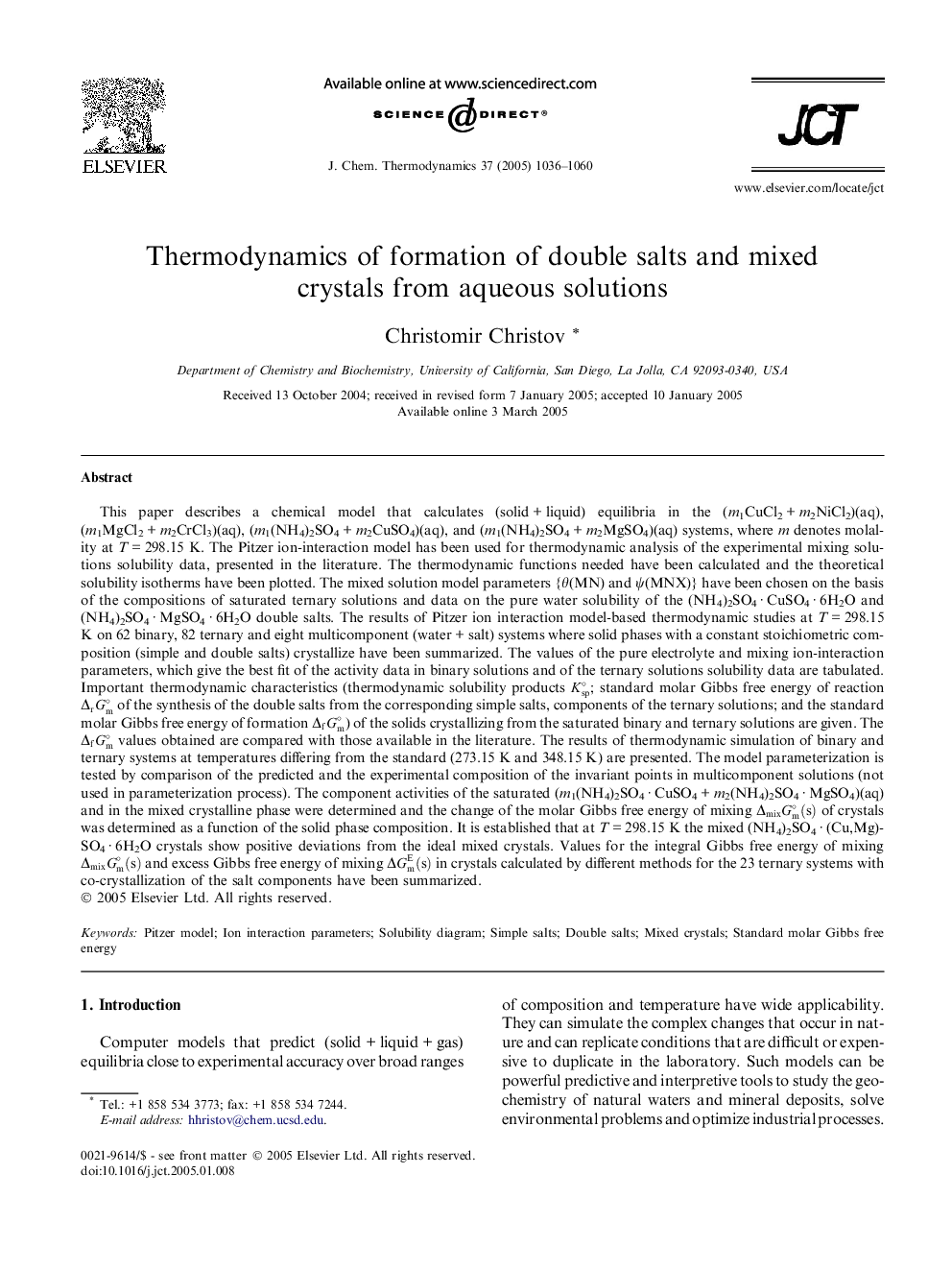| Article ID | Journal | Published Year | Pages | File Type |
|---|---|---|---|---|
| 9633505 | The Journal of Chemical Thermodynamics | 2005 | 25 Pages |
Abstract
This paper describes a chemical model that calculates (solid + liquid) equilibria in the (m1CuCl2 + m2NiCl2)(aq), (m1MgCl2 + m2CrCl3)(aq), (m1(NH4)2SO4 + m2CuSO4)(aq), and (m1(NH4)2SO4 + m2MgSO4)(aq) systems, where m denotes molality at T = 298.15 K. The Pitzer ion-interaction model has been used for thermodynamic analysis of the experimental mixing solutions solubility data, presented in the literature. The thermodynamic functions needed have been calculated and the theoretical solubility isotherms have been plotted. The mixed solution model parameters {θ(MN) and Ï(MNX)} have been chosen on the basis of the compositions of saturated ternary solutions and data on the pure water solubility of the (NH4)2SO4 · CuSO4 · 6H2O and (NH4)2SO4 · MgSO4 · 6H2O double salts. The results of Pitzer ion interaction model-based thermodynamic studies at T = 298.15 K on 62 binary, 82 ternary and eight multicomponent (water + salt) systems where solid phases with a constant stoichiometric composition (simple and double salts) crystallize have been summarized. The values of the pure electrolyte and mixing ion-interaction parameters, which give the best fit of the activity data in binary solutions and of the ternary solutions solubility data are tabulated. Important thermodynamic characteristics (thermodynamic solubility products Kspâ; standard molar Gibbs free energy of reaction ÎrGmâ of the synthesis of the double salts from the corresponding simple salts, components of the ternary solutions; and the standard molar Gibbs free energy of formation ÎfGmâ) of the solids crystallizing from the saturated binary and ternary solutions are given. The ÎfGmâ values obtained are compared with those available in the literature. The results of thermodynamic simulation of binary and ternary systems at temperatures differing from the standard (273.15 K and 348.15 K) are presented. The model parameterization is tested by comparison of the predicted and the experimental composition of the invariant points in multicomponent solutions (not used in parameterization process). The component activities of the saturated (m1(NH4)2SO4 · CuSO4 + m2(NH4)2SO4 · MgSO4)(aq) and in the mixed crystalline phase were determined and the change of the molar Gibbs free energy of mixing ÎmixGmâ(s) of crystals was determined as a function of the solid phase composition. It is established that at T = 298.15 K the mixed (NH4)2SO4 · (Cu,Mg)SO4 · 6H2O crystals show positive deviations from the ideal mixed crystals. Values for the integral Gibbs free energy of mixing ÎmixGmâ(s) and excess Gibbs free energy of mixing ÎGmE(s) in crystals calculated by different methods for the 23 ternary systems with co-crystallization of the salt components have been summarized.
Related Topics
Physical Sciences and Engineering
Chemical Engineering
Chemical Engineering (General)
Authors
Christomir Christov,
